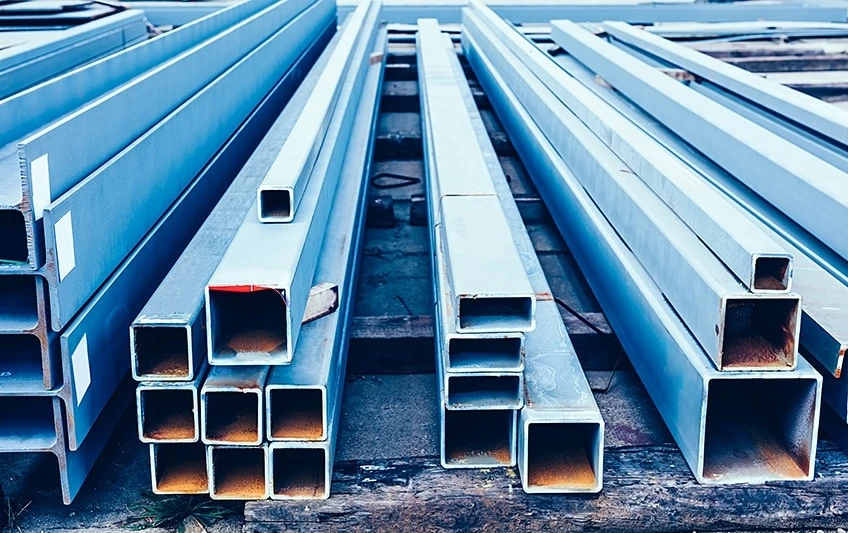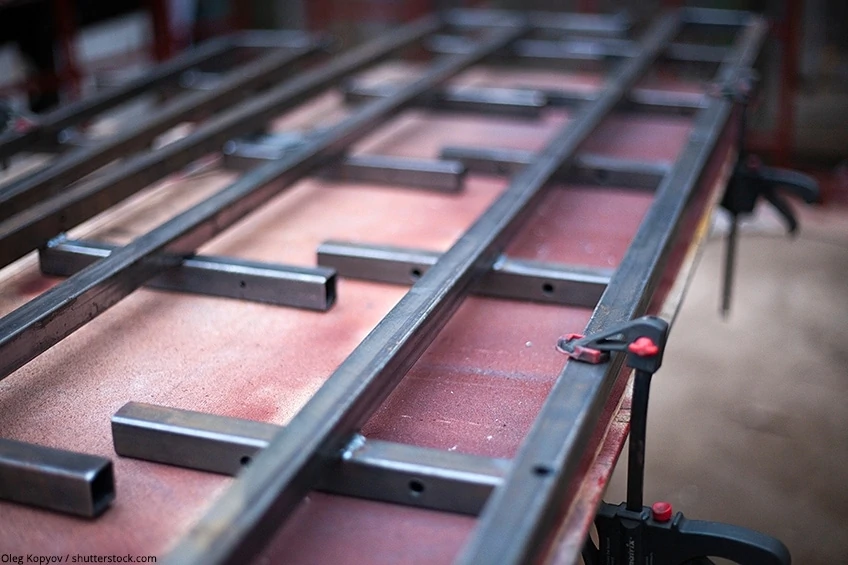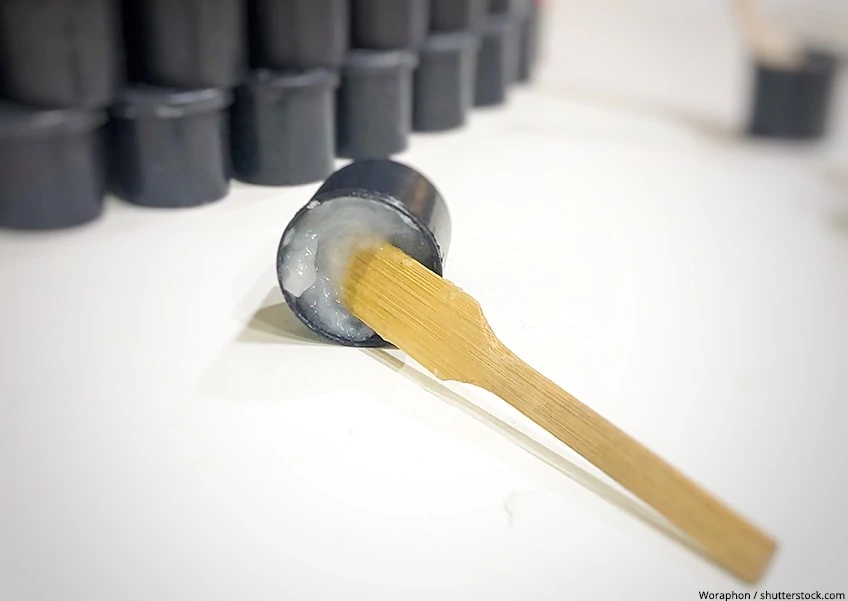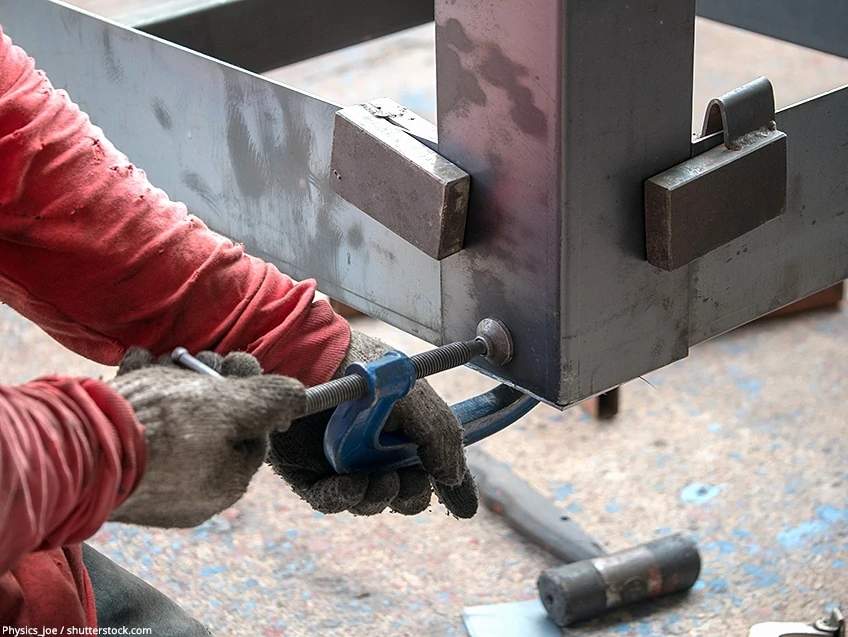Best Glue for Stainless Steel – Guide for Stainless Steel Adhesives
This post may contain affiliate links. We may earn a small commission from purchases made through them, at no additional cost to you. You help to support resin-expert.com
You do not necessarily have to screw, rivet, or weld stainless steel. You can also glue stainless steel without any problems. All you need is the right adhesive for stainless steel – and our adhesive test and guide.
Table of Contents
What Is a Stainless Steel Adhesive?
Stainless steel glue refers to those adhesives that bond stainless steels and other metals together in a high-strength and durable manner. Nowadays, there is a wide variety of them on the market, so that the right stainless steel adhesive can be purchased for every application. The motto is “bonding instead of welding”.
Stainless steel adhesives are often water- and weather-resistant and extremely resistant to the effects of heat. A good adhesive for stainless steel must be able to withstand the latter in particular, as metals are often used where they are exposed to large temperature differences or heat. A solid adhesive for stainless steel should also be vibration-damping.
Stainless steel adhesives are available as one- or two-component variants. The following chapters will tell you exactly what the differences are and what kind of adhesive is best used where.
Material Properties of Stainless Steel
Stainless steels are metals that are not only highly resistant to corrosion but also to weathering. Furthermore, they meet high optical as well as hygienic requirements. Therefore, they are used in many different areas today. Of importance here is not only the industrial sector, but also the domestic sector.
Stainless steels have a very high degree of purity. This means that they contain virtually no phosphorus or sulfur. Because of their high corrosion resistance, these metals are referred to as “stainless steel”.
In practice, the following stainless steels are distinguished:
- Alloyed stainless steels, such as chromium steel, chromium-molybdenum steel, chromium-nickel steel, and titanium steel
- Unalloyed stainless steels, being all iron-carbon alloys
Stainless steels have even more advantages than those mentioned above. For example, the need for coating can be circumvented by grinding, polishing, brushing, or buffing their surface. This creates a chromium oxide passive layer that always regenerates when damaged.
Advantages of Gluing Stainless Steel
Stainless steel bonding offers many advantages over traditional joining methods such as welding, bolting, or riveting:
- Bonding is possible not only with adhesives, but also with the latest adhesive tapes; this way, the work succeeds without any dripping and residues.
- Stainless steel bonding optimizes industrial processes and can increase cycle time.
- Bonding stainless steel also has safety-related aspects, as it is significantly less dangerous than riveting or welding.
- Bonded parts add much less weight than bolted or riveted joints.
- The adhesive seam is invisible; moreover, no bulges or welds are formed.
- A wide variety of material combinations are possible; for example, the joining of metal and plastic, which would not be possible by welding.
- The material structure is always changed by high heat exposure, as in welding; this does not happen in stainless steel bonding.
- The adhesive composition can be individualized and additives can be mixed in.
- As a rule, the workpiece does not need to be reworked after bonding.
- Extremely thin parts, such as foils, can also be joined.
- Bonding stainless steel offers high savings in costs, as many adhesives can serve as a bonding and insulation agent at the same time, and the execution is easy to manage.
Different Types of Stainless Steel Glue
The range of different stainless steel adhesives is wide these days, so you have free choice. Generally, many users tend to use one- or two-component adhesives based on epoxy resin or polyurethane resin. However, there are other stainless steel adhesives available that have optimal properties for joining stainless steel. We have isolated the best glue for stainless steel within each category of adhesive.
Silicone Adhesive
Silicone adhesives are available as a one-component or two-component variant. This stainless steel adhesive is based on a silicone compound and is in turn classified into neutral-crosslinking or acetic acid-crosslinking silicones. Silicone is also the first choice as a solid glass adhesive.
Our Recommendation: GE SEALANTS & ADHESIVES Advanced Silicone Sealant
This silicone sealant by the GE brand offers excellent value for money, as it is a highly durable adhesive and sealant with several great features. For instance, this adhesive is both waterproof and weatherproof, making it resistant to such effects as freezing temperatures, water exposure, and UV degradation. This product also protects against stains caused by mildew and mold.
GE’s silicone sealant will cure quickly, and can be ready for exposure to rain in as little as half an hour. This product also will not blemish or discolor your metal surfaces. With a fantastic level of flexibility and strong adhesive properties, this silicone sealant will last for as long as you own your home.
- 100% waterproof and weatherproof
- Resistant to mold, freezing temperatures, and UV damage
- Excellent flexibility and strong adhesion
This is an excellent silicone-based adhesive that will require a caulking gun for application. The only disadvantage to this product is that it cannot be painted over.
MMA Adhesive
MMA adhesives are a two-component adhesive based on methyl methacrylate. While this stainless steel adhesive is a true all-rounder, it works best for bonding stainless steel to itself and to plastic. The metal bonds made with it are incredibly stable, as the surface tension of the two-component MMA adhesive is extremely low. The curing of the MMA adhesive occurs on the process of polycondensation, which is initiated by the addition of the hardener.
Our Recommendation: PLEXUS MA310 All-Purpose High-Strength MMA Adhesive
This is a two-part MMA adhesive that has been formulated to provide a strong bond on metals, thermoplastics, and composites. This high-strength adhesive will even bond to unclean surfaces and will be able to handle any off-ratio mixing. Plexus offers an adhesive that is both stong and stiff with the capability of bonding to a variety of materials. This product includes the cartridge and mixing syringe, but you will require your own mixing gun (with a 1:1 mixing ratio) and applicator.
- Medium-curing adhesive for thermoplastics, metals, and composites
- Bonds to dirty/less clean surfaces, and
- Excellent Tolerance to Off-Ratio Mixing
This product is a strong and versatile stainless steel adhesive, but you will need to purchase a separate applicator gun and plunger to use it.
STPU Polymer Adhesive
STPU polymer adhesives are based on polyurethane. These are hybrid assembly adhesives that react with isocyanates. They are available in both a one- and a two-component version. The difference between the two types of adhesive lies in the curing process: while the one-component (1K) adhesives cure with the aid of ambient moisture to form long-chain crosslinked polymers, the two-component (2K) variant cures through the interaction of the two reactants.
The 1K adhesive remains highly flexible after curing and, like silicone, is suitable for equalizing stresses while at the same time providing very strong adhesive bonds. The STPU polymer adhesive is also perfectly suited for bonding different materials, such as metal and plastic. STPU polymer adhesives are particularly popular in industry. For example, it is often used in car body or apparatus construction, but also in shipbuilding and container construction.
This adhesive is also well suited for sealing. In addition, the use of a suitable primer is recommended for bonds that are exposed to weather conditions, such as outdoor bonding. This further increases the longevity of the bond.
Our Recommendation: LOCTITE PL Premium Construction Adhesive
This urethane-based adhesive provides top-quality performance and durability. You will be able to cover twice as much surface area with this product, which is also three times stronger than other adhesives on the market. Loctite’s premium construction adhesive will add some additional shine to your material, and it will adhere strongly to most common construction surfaces.
You can use this product on both interior and exterior surfaces, as it is waterproof, temperature-resistant, and will even cure in colder climates. You can also paint over this adhesive and apply it directly to wood that is wet, dry, or frozen. This adhesive will cure quickly and will not stain your surface.
- High performance urethane-based adhesive
- Waterproof, paintable, and cures even in cold temperatures
- Twice the coverage of conventional adhesives and 3 times stronger
This adhesive can be messy if not used with a caulk gun, and the tan color of the finish may not be desirable to some. Other than these disadvantages, this product is truly a great purchase.
Adhesive Tape
A state-of-the-art variant is the use of high-performance adhesive tapes for “gluing” stainless steel. These are usually double-sided adhesive tapes based on acrylate adhesive. They also bond not only stainless steel and other metals, but also combinations of materials effortlessly and permanently. However, they are not suitable for spot bonding, but rather for straight-line or large-area bonding.
Our Recommendation: HITLIGHTS Heavy-Duty Double-Sided Tape
This double-sided heavy-duty adhesive tape by the Hitlights brand is optimized for fast and easy application, as it is simple to peel, curling-resistant, and very flexible. Formulated as an acrylic-based adhesive with viscoelastic properties, this tape is waterproof, can be used on most surfaces, and can even handle high temperatures. To install this foam tape, simple peel the tape off and stick it to the surface in question. You will be able to reposition the tape with ease provided you have not pressed it down, and doing so will not affect the efficacy of the adhesion. You can ensure a strong and lasting bond when you use this heavy-duty adhesive tape.
- Heavy-duty, strong, and flexible double-sided adhesive tape
- Waterproof and resistant to harsh heat
- Multipurpose and easy to install
The only disadvantage to using this tape is that it can be difficult to remove the tape from its backing without a knife or sharp object. In all other respects, this is the ideal tape to use for bonding your stainless steel surfaces.
Two-Component Epoxy Resin Adhesive
If you are joining stainless steels, but also if you want to bond different materials, a two-component epoxy stainless steel adhesive is an excellent choice. For example, if you want to bond stainless steel to concrete, this adhesive could be your tool of choice.
This is a high-strength curing reactive adhesive consisting of epoxy resin and a hardener. These form a high-strength bond with each other through a chemical reaction.
Epoxy adhesives are available which must first be mixed, and those whose application is greatly facilitated by a double-chamber cartridge, as mixing is no longer necessary. Both components are pressed out of the cartridge in precisely metered proportions and mixed with a spatula. Then the epoxy adhesive can be applied straight away.
Two-component epoxy resin adhesive is temperature-resistant in a range from -40° to 248° Fahrenheit (-40° to 120° Celsius). It cures relatively quickly at room temperature. Although this adhesive has many advantages, it also has the disadvantage of a limited pot life, which is the period within which the adhesive must be processed.
If you want to bond large stainless steel surfaces, it is essential to observe the pot life. Furthermore, work safety should be observed when working with 2K epoxy resin stainless steel adhesives. Wear long-sleeved clothing and gloves and ensure sufficient ventilation.
Our Recommendation: J-B WELD KwikWeld Steel Reinforced Epoxy Syringe
This two-part epoxy adhesive for stainless steel will repair a variety of surfaces with a strong and lasting bond. You do not have to worry about complicated mixing ratios with this product, as it has a simple 1:1 mixing ratio that comes with a mixing tray and stirring stick. The syringe attachment has a re-sealable lid that stops it from leaking or drying out, thus allowing for many uses. This adhesive is quick to cure and will set to a dark grey color. The epoxy bond, once cured, can be shaped, filed, drilled, tapped, and sanded with ease.
- Quick-setting two-part epoxy system
- Provides strong and lasting repairs to multiple surfaces
- Re-sealable cap prevents drying out, allowing for several uses
While this is certainly a strong and durable adhesive that can even withstand temperatures of up to 300º Fahrenheit (148º degrees Celsius), this product may not bear particularly heavy loads.
Practical Applications of Stainless Steel Adhesives
Bonding stainless steel instead of joining it using classic joining techniques has many advantages and therefore also finds a wide range of applications. Especially in the industrial sector, the following applications can be found:
- In industrial manufacturing
- In aircraft and vehicle construction
- In the food industry
- In the electronics sector
- For laminating
- For exterior structural elements in rail vehicle construction
- In parapet and facade construction as so-called structural glazing (if fastening elements are not to be visible)
- As cladding elements for escalators
- For interior design parts
- In staircase construction
- In the medical-technical field, such as stainless steel cannulas and endoscopes
Important for Stainless Steel Adhesive Success: Preparatory Work
To achieve a truly permanent bond, thorough surface preparation must be carried out. To do this, both substrates should first be freed of all dirt. This includes dust, rust, grease, oil, and all other dirt residues. Use a lint-free cloth and some acetone to remove grease and chemicals from the surfaces.
After this, the substrates should be lightly roughened with emery paper to improve the adhesion of the stainless steel adhesive. It is important to carry out the cleaning work before roughening, as otherwise the dirt particles will be introduced into the substrates by the roughening and could impair the adhesive properties there.
After roughening, the substrates should of course be cleaned again of the grinding dust. Parts that have been previously sawn must also be thoroughly deburred.
Frequently Asked Questions
What Is the Best Silicone for Stainless Steel?
Stainless steel can be bonded with silicone, both with normal sealing silicone and with a special silicone adhesive. However, we would advise using the special silicone adhesive if particularly strong and durable bonds are required.
What Is the Best Adhesive for Stainless Steel?
The adhesive for stainless steel depends on the application. If you want a high-strength bond, you should use either a special stainless steel adhesive or a two-component epoxy resin adhesive.
The right adhesive or glue for stainless steel depends on the material combination as well as the desired final strength. We hope we were able to give you a small overview of the different types of adhesives in our stainless steel adhesive guide.










